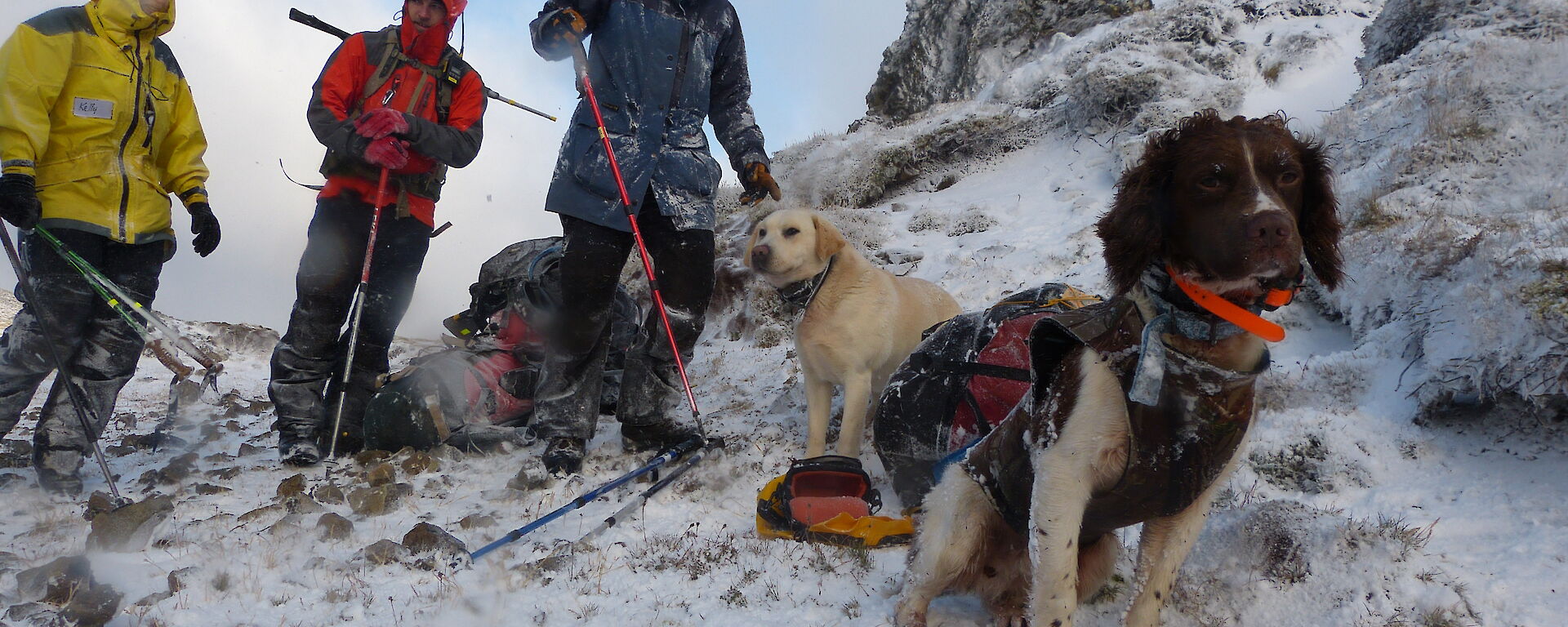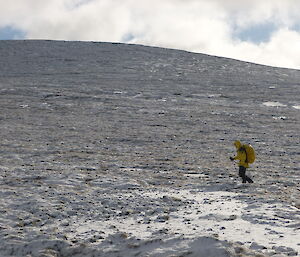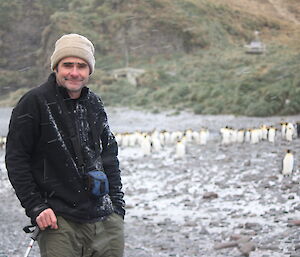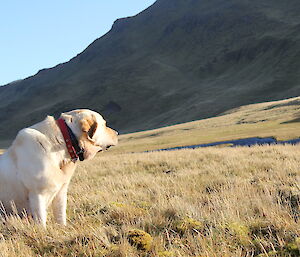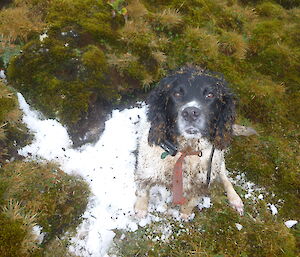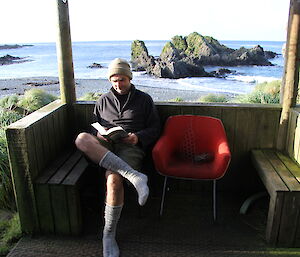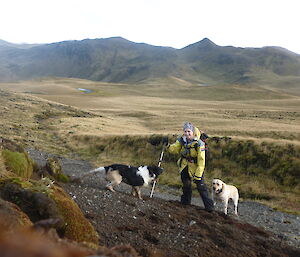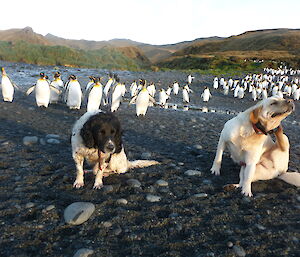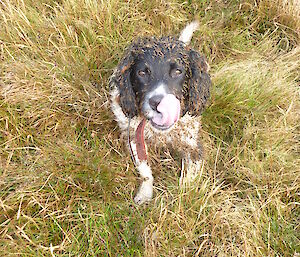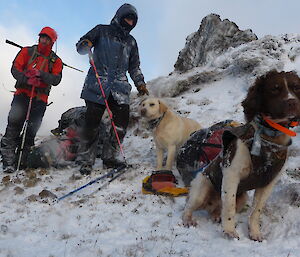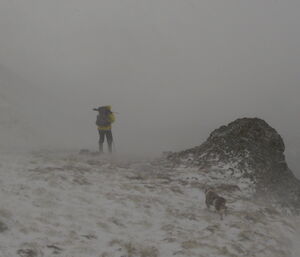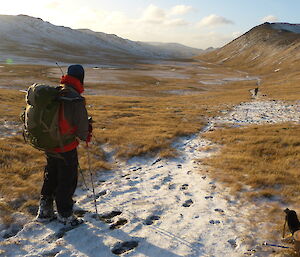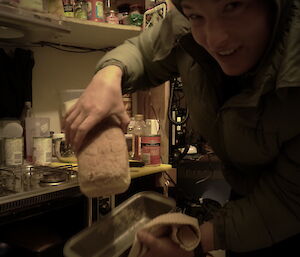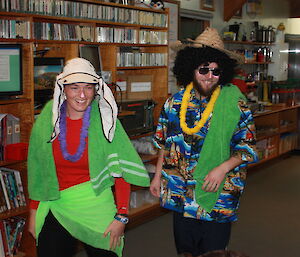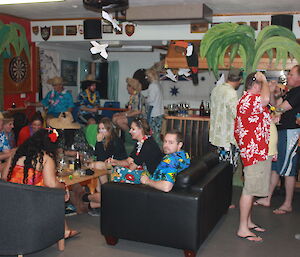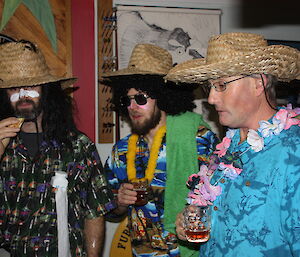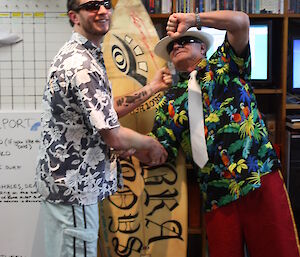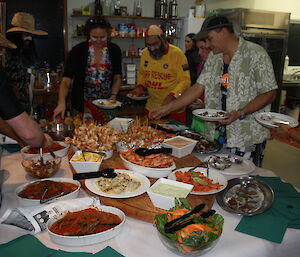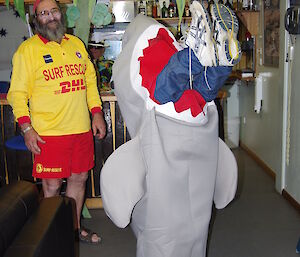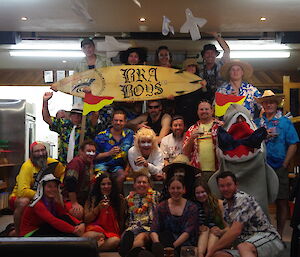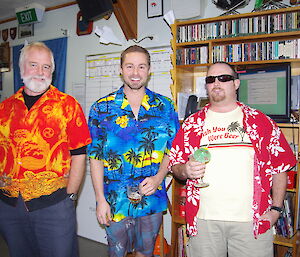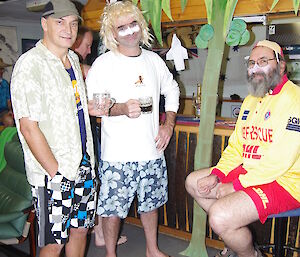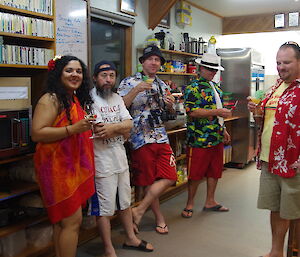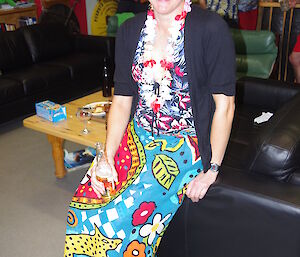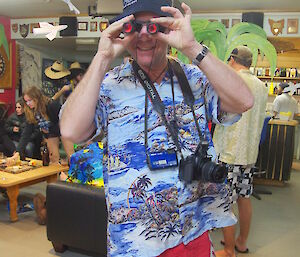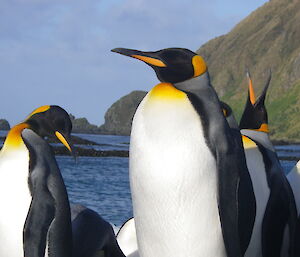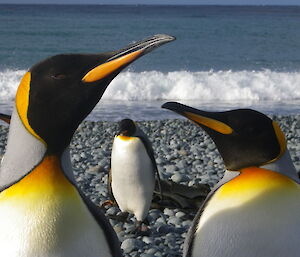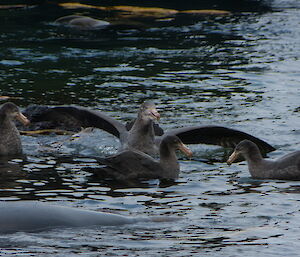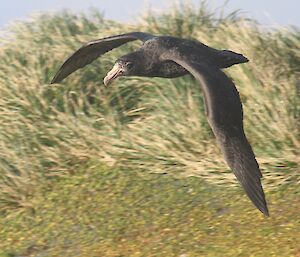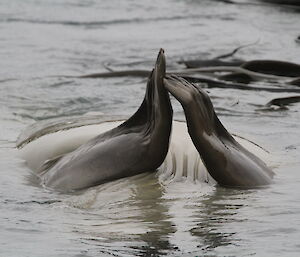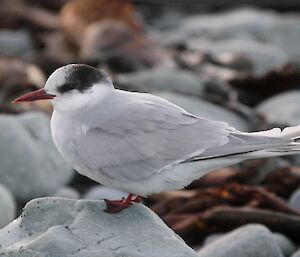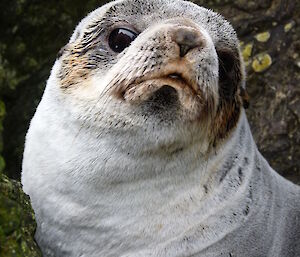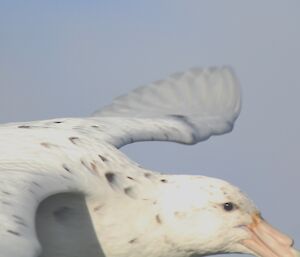Work on ensuring the island is pest free continues as the 2012 MIPEP team tramp across every inch of Macca in search of any pest sightings. The following article, written by Mary-Lou Considine in this month’s ECOS magazine provides an excellent update.
Macquarie Island is back in bloom
By Mary-Lou Considine
Scientists are astounded at the rapid recovery of native vegetation on Australia’s sub-Antarctic Macquarie Island — affectionately known as ‘Macca’ — after the launch of a massive program to eradicate introduced rats, mice and an overwhelming rabbit population.
Now, the island’s distinctively vegetated landscape is on the rebound, as are its seabird and invertebrate populations and the fragile peat soil and slopes of this World Heritage-listed area.
The blueprint for the rabbit and rodent eradication program was first drawn up eight years ago, after it became apparent that vegetation loss due to a 100,000-plus rabbit population [PDF] was causing problems for endangered plants and seabirds. Seabird breeding, plant regeneration and invertebrate populations were also being affected by rats and mice.
What followed was years of planning, applications for permits to use poisoned bait, procurement and logistics by a team from the Tasmania Parks and Wildlife Service (TasPAWS). Team leader Keith Springer says it was a challenge to ‘make sure all the project elements — regulatory approvals, dog training, equipment procurement, contracts for bait, bait pods, helicopters, shipping, staff recruitment — came together at the right time’.
After building helicopter landing areas and field huts, the team turned its attention to the aerial baiting, scheduled to be carried out in 2010. But, due to bad weather and lack of ship availability, things didn’t quite go to plan, says Mr Springer; it was not until 2011 that aerial baiting began in earnest.
Three months before aerial baiting resumed in 2011, rabbit calicivirus was introduced to the island to reduce the rabbit population. This step was part of a risk management strategy to minimise the number of poisoned rabbit carcases above-ground that could be eaten by predatory or scavenging seabirds.
By last July, the last of the poisoned bait had been dropped from helicopter-slung buckets. Teams of hunters, accompanied by highly trained sniffer dogs and handlers, then arrived on the island to ‘mop up’ remaining pests. While they initially managed to flush out 13 rabbits, none have been detected on the island since December.
Even before those last remaining rabbits were tracked down, however, the island was re-greening.
‘I thought it would take a lot longer for the vegetation to start springing back,’ says Australian Antarctic Division (AAD) plant ecologist, Kate Kiefer.
‘But when I arrived on the island last October, I was just astounded at the recovery of the Pleurophyllum hookeri, the native silver-leaf daisy, up the back of Sandy Bay, which is home to a colony of Royal Penguins and a sightseeing stop for tourists.
‘The last time I had been there [March 2011], the vegetation in that area had looked appalling. Tops of plants had been eaten off, few entire leaves were seen, some of the rosettes had been eaten down to ground level, and in comparison to the late 1990s — when I first started working at Macca — the area looked like a moonscape.’
The Macquarie Island cabbage (Stilbocarpa polaris), a large plant with distinctive broccoli-like flower heads, is another of the island’s unique ‘megaherbs’ on the road to recovery. Ms Kiefer says over the past 10 years the plant had all but disappeared from parts of Sandy Bay. But by December last year, ‘there were seedlings everywhere’. More recently, during his latest visit in April, Mr Springer noted that ‘the coastal slopes near Sandy Bay are well-covered with flourishing Stilbocarpa that is over knee-high in places’.
While this population appears to have regenerated primarily from an underground seed bank, in other places around the island — where the Stilbocarpa were less damaged – stands are sprouting from underground rhizomes, effectively producing genetic ‘clones’. However, it is the genetic diversity of seeds, the product of sexual reproduction, that will ensure the resilience of the island’s plant populations into the future.
In a paper published in Ecological Management & Restoration in December 2011, three of Ms Kiefer’s colleagues — Drs Justine Shaw, Aleks Terauds and Dana Bergstrom from the AAD — noted that in a small area covered by aerial baiting in June 2010, plants had begun regenerating within half a year.
‘Within six months, we observed substantial regrowth of tussock grass,’ they wrote. ‘The rapid re-emergence of this grass over such a short time period following localised removal of rabbits has positive implications for the island’s recovery and provides insight for restoration monitoring.’
Tussock grass (Poa foliosa) is a large, dense grass that is a keystone species in the island’s ecosystem. Its extensive roots stabilise steep slopes and provide habitat for surface-nesting seabirds, such as the black-browed albatross. Tussocks also protect burrow-nesting seabirds such as white-headed petrels, blue petrels, soft-plumage petrels and grey petrels from predation by skuas.
In their paper, the three AAD scientists noted the immediate benefits of vegetation recovery in heavily denuded areas, including increased slope stability, reducing landslip occurrence; habitat restoration for nesting seabirds and invertebrates; increased cover for burrowing seabirds; and repaired geomorphological processes (peat formation) and hydrological processes (fog interception or ‘water harvesting’ by plants).
On her return from the island in early May, Dr Bergstrom noted the appearance of many more invertebrates, particularly spiders. This reinforced the long-held suspicion that rats and mice were probably having a much larger effect on invertebrate populations than scientists had thought.
Mr Springer says it is too early to tell if the pest eradication program has been completely successful. ‘We anticipate it will be a couple of years before we can claim success in rabbit and rodent eradication — that will be decided after we send rodent detection dogs to the island in 2013.’
Late last year, the program attracted some publicity around the numbers of seabirds — mainly kelp gulls, but also skuas, ducks, and endangered giant petrels — that died from ingesting poisoned carcases or bait. But Mr Springer says the risk of ‘by-kill’, identified early on, was far outweighed by the risk of doing nothing and watching the island’s environment degrade even further. This view was reinforced in a paper published in 2011 by scientists from AAD, TasPAWS and CSIRO.
‘Of the non-target species affected by baiting, none were threatened at a population level, and all were breeding successfully in the 2011/12 summer,’ says Mr Springer. ‘If the eradication is ultimately successful, no population is likely to suffer long-term negative impacts — although the artificially inflated skua population may decline without abundant rabbits to feed on — and many species will gain long-term benefits.’
During his April visit, Mr Springer saw signs of new life everywhere. ‘Blue petrels are already back breeding on the main island, after being restricted to offshore rock stacks by rat predation on the main island.
‘Terns are nesting on the cobblestone beaches, which they have been unable to do for decades in the face of rat predation. Grey petrel breeding success in 2011 was the highest recorded since the recovery of the species on Macquarie commenced in 2000. Vegetation recovery across the whole island is noticeable and increasing.
‘With these responses in less than a year, no-one familiar with the island will recognise it in 20 years time, as the changes in landscape, vegetation, birdlife and invertebrates will be so dramatic.’
If the Macquarie Island program is successful, it will be the largest eradication of rabbits, rats and mice ever undertaken on an island. Not surprisingly, environmental agencies across the world have been keeping a close eye the Macquarie program to apply the lessons learned elsewhere.
For example, on remote Gough Island off the British territory of Tristan da Cunha, mice are causing a decline in wandering albatross and petrel numbers. A rat eradication program in South Georgia has borrowed ideas from the Macquarie eradication program. Canada is currently planning a rat eradication campaign on three islands in the Queen Charlotte island group, and Mexico is working on cat eradication (already carried out on Macquarie in the late 1990s) on a number of offshore islands.
Ms Kiefer agrees that the unique ecosystems of Macquarie Island deserve to be protected. The island is one of a handful in the Pacific sector of the Southern Ocean where migratory animals in the region can breed. Around 3.5 million seabirds and 80,000 elephant seals arrive on the island each year to breed and moult. Revegetation will ensure habitat availability and reduce landslides into the future. But, the uniqueness of the island’s plants themselves should not be overlooked.
‘The island is covered in vegetation that is unique to the sub-Antarctic islands — not so much the individual plant species, but the type of vegetation community they form,’ she says. ‘Macquarie shares a number of species with the New Zealand island group [PDF] (which includes NZ’s Campbell and Auckland Islands), but also has its own suite of endemic species. When you group all the species together, you get very distinctive vegetation types that only occur on islands in these high southern latitudes.’
‘Whereas the northern hemisphere’s land mass at the equivalent latitude is enormous and tundra vegetation is widespread, in the southern hemisphere, the land equivalent is represented by only these few small islands with their unique vegetation: islands worthy of protection on a global scale.’
For this very reason, the success of this project is important. In years to come, scientists and managers will no longer have to contend with the ongoing impacts of feral animals — instead, they will be facing less daunting problems.
‘Once the vegetation does recover, it’s going to be harder for people to walk around the island, because the vegetation in areas away from the plateau will be knee-high rather than ankle-high,’ says Ms Kiefer. ‘But, it’s such a small price to pay for the return of the island to its former glory.’

